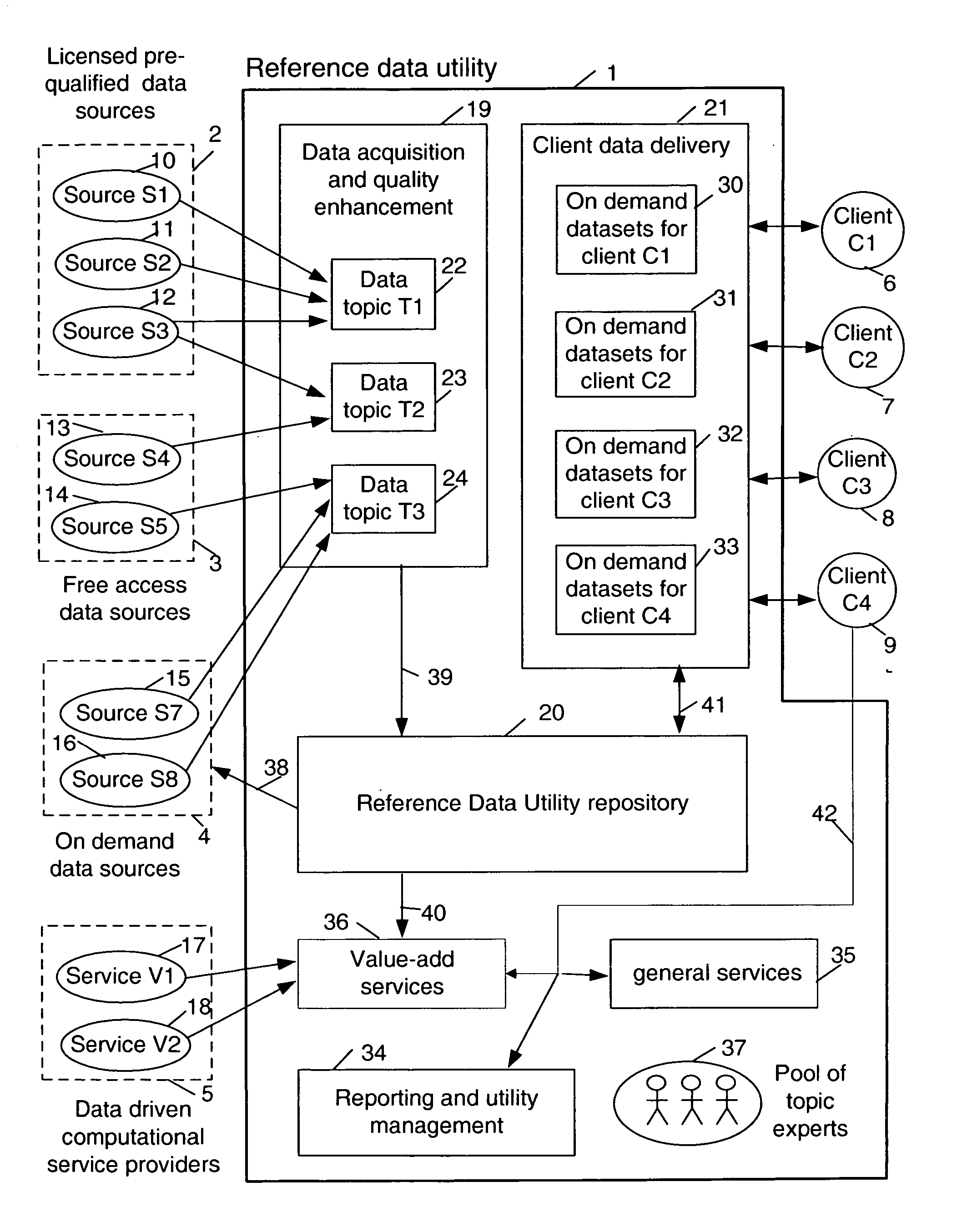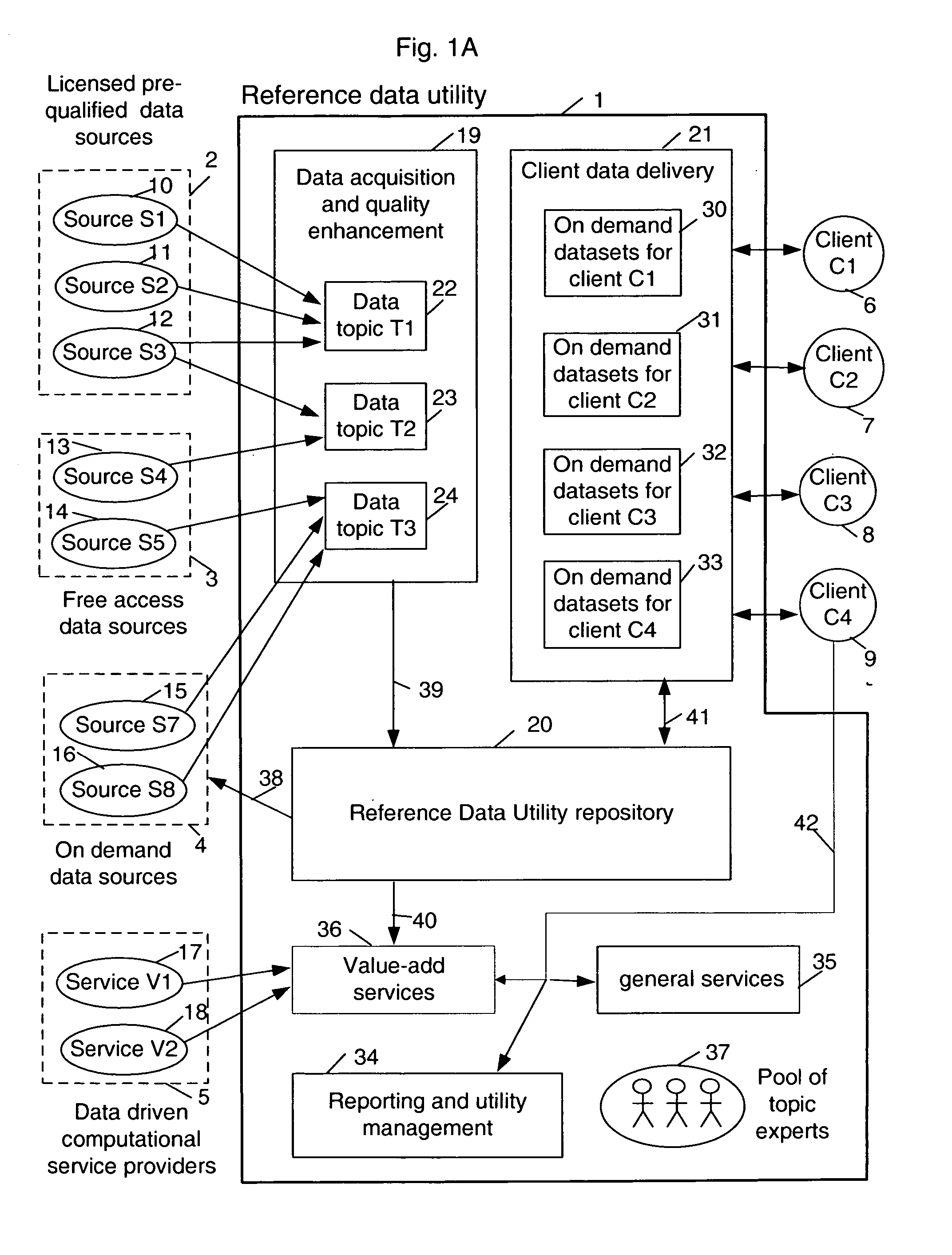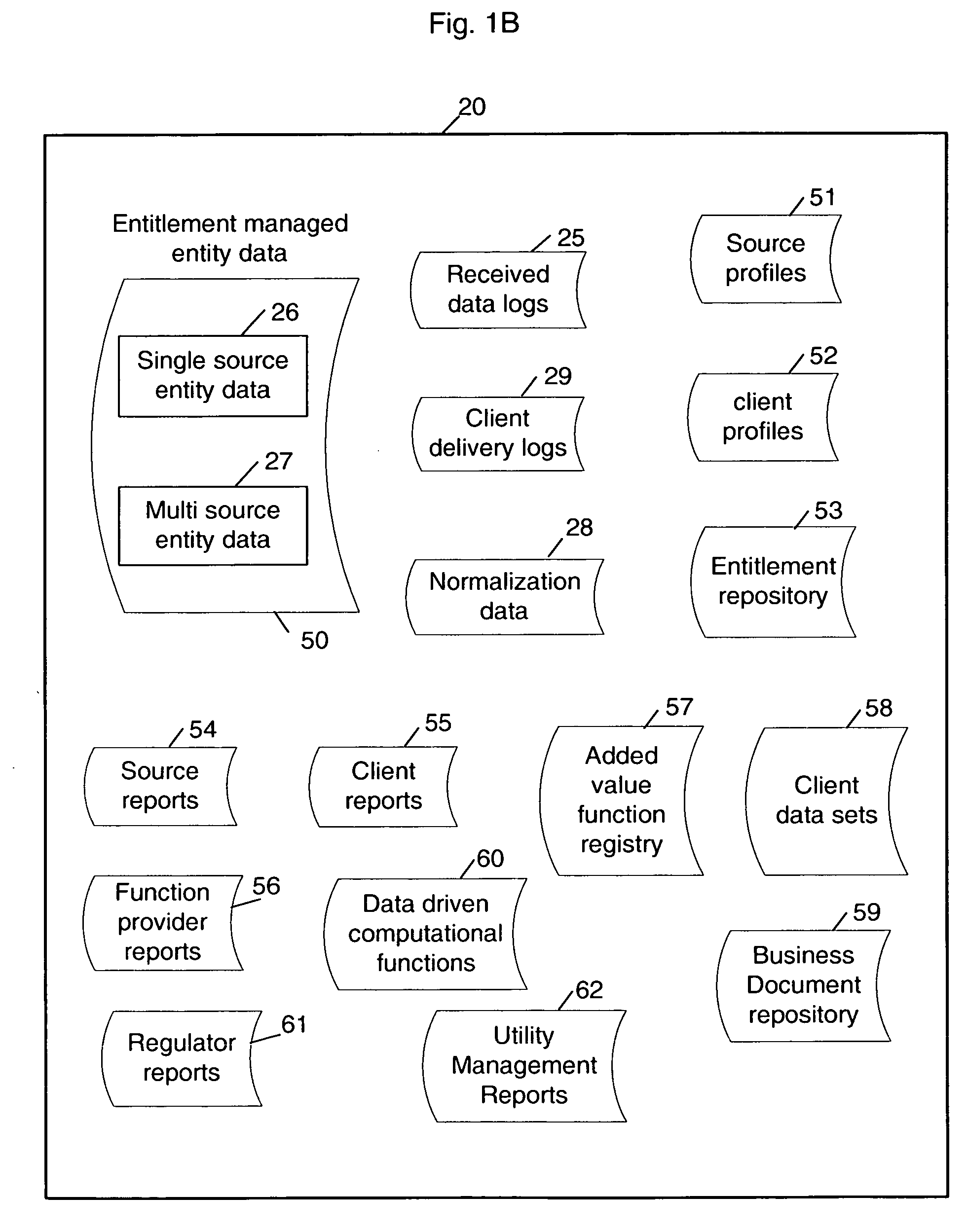Enabling value enhancement of reference data by employing scalable cleansing and evolutionarily tracked source data tags
a source data and value enhancement technology, applied in the field of data management utility services, can solve the problems of inability to process even the simplest of transactions for inability to meet the needs of organizations with incompatible reference data, and inability to solve the problem of inability to meet the needs of clients or internal financial management processes, etc., and achieve the effect of reducing cost and improving quality
- Summary
- Abstract
- Description
- Claims
- Application Information
AI Technical Summary
Benefits of technology
Problems solved by technology
Method used
Image
Examples
example repository
[0319] Example repository entity ENT1 is shown with three entity properties P1, P2, and P3 represented by boxes 1210, 1211, and 1212 respectively. In this example, each entity property has annotations within the parent entity ETSDT (box 1206) relating to them. An advantageous embodiment places property annotations within the parent entity ETSDT. An alternative implementation could have separate ETSDTs associated with the properties.
[0320] A repository entity includes a list of item instances. Each item instance gathers together and includes a set of all attribute values for the parent entity provided by a single, common sourcing. One common sourcing could be that all data in the item instance originated from a single source dataset provided by one source (e.g. Data Vendor A). Another common sourcing is that the data in the item instance was provided by a single identified item instance process (e.g. Value Comparison Process B). Distinct support for both types of sourcing is importan...
PUM
 Login to View More
Login to View More Abstract
Description
Claims
Application Information
 Login to View More
Login to View More - R&D
- Intellectual Property
- Life Sciences
- Materials
- Tech Scout
- Unparalleled Data Quality
- Higher Quality Content
- 60% Fewer Hallucinations
Browse by: Latest US Patents, China's latest patents, Technical Efficacy Thesaurus, Application Domain, Technology Topic, Popular Technical Reports.
© 2025 PatSnap. All rights reserved.Legal|Privacy policy|Modern Slavery Act Transparency Statement|Sitemap|About US| Contact US: help@patsnap.com



